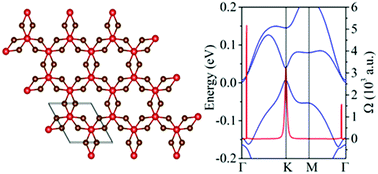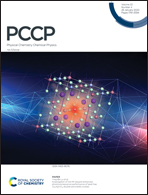The intrinsic magnetism, quantum anomalous Hall effect and Curie temperature in 2D transition metal trihalides†
Abstract
Searching for experimentally feasible intrinsic quantum anomalous Hall (QAH) insulators is of great significance for dissipationless electronics applications. Here we predict, based on density functional theory (DFT), that four monolayer transition metal tri-bromides (VBr3, FeBr3, NiBr3, and PdBr3) are endowed with intrinsic half-metallicity and possess quantum anomalous Hall insulating phases. DFT+U calculations reveal that the VBr3, NiBr3, and PdBr3 monolayers undergo nontrivial to Mott insulator transitions with increasing on-site Hubbard Coulomb interaction U at 0.5, 2 and 3 eV. The gap opening induced by the spin–orbit coupling drives the systems into the QAH state. The Curie temperatures of the VBr3, NiBr3, and PdBr3 monolayers are ∼190, 100 and 110 K. Additionally, the calculated cleavage energies suggest that the freestanding VBr3, FeBr3, NiBr3, and PdBr3 monolayers can be easily produced by exfoliation using adhesive tape, which may stimulate experimental research interest to achieve QAH phases.



 Please wait while we load your content...
Please wait while we load your content...